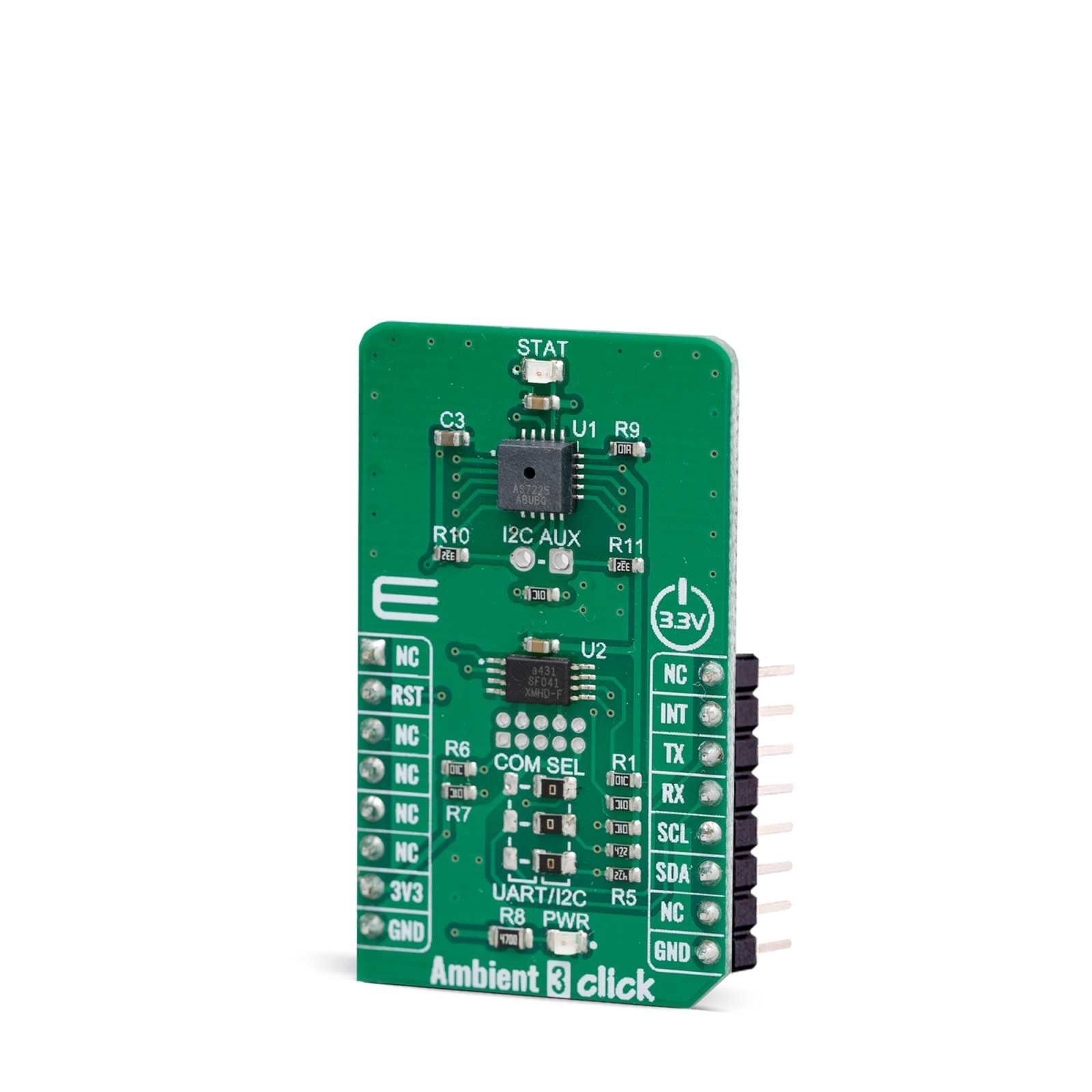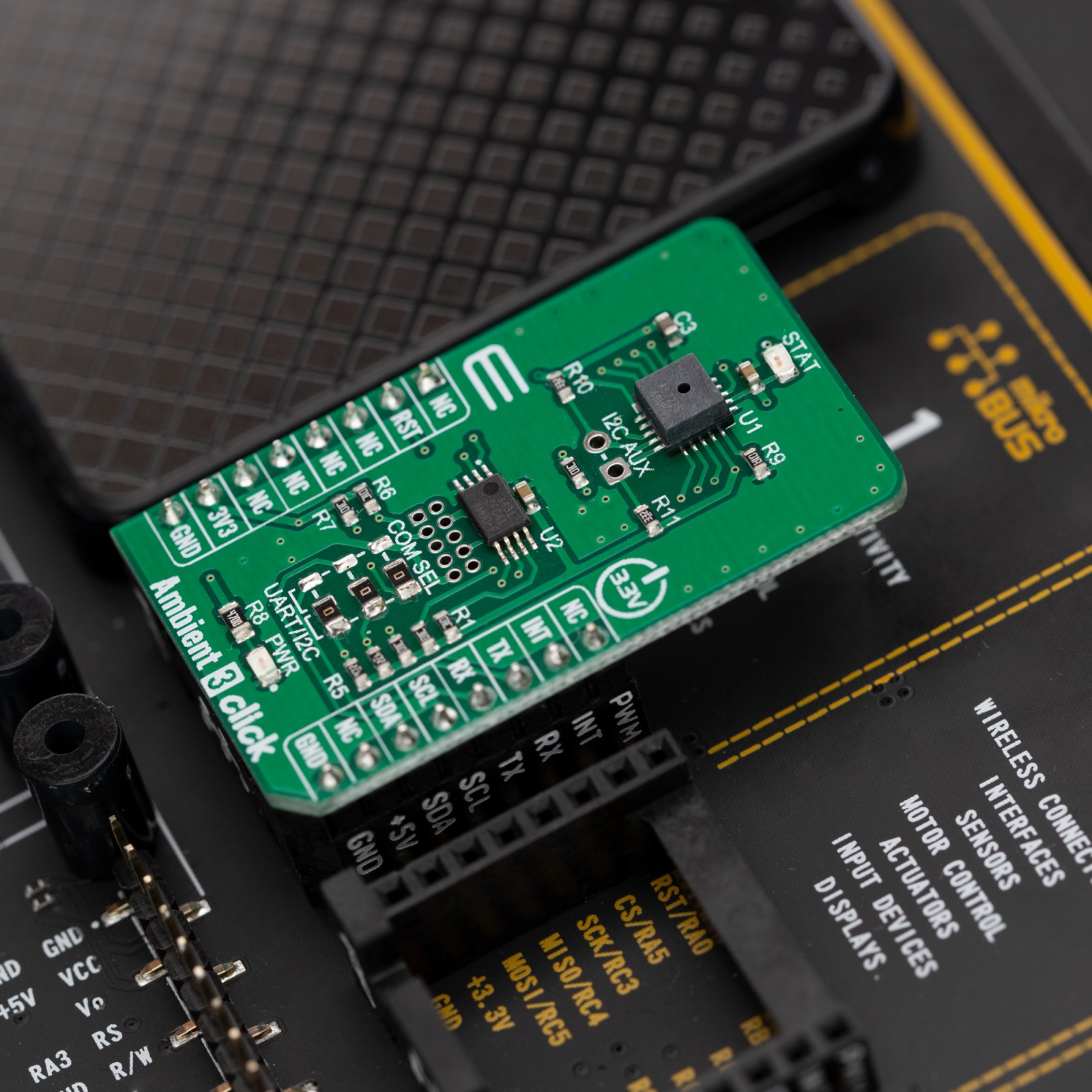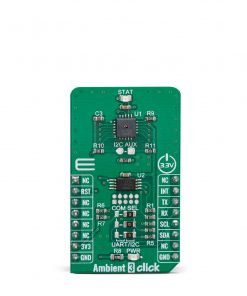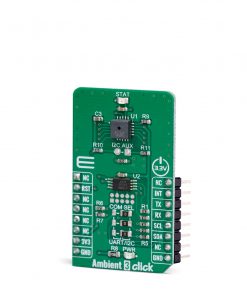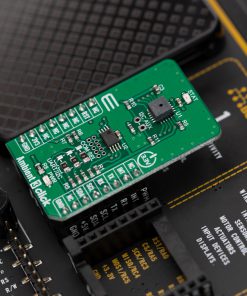Ambient 3 Click
R560.00 ex. VAT
Ambient 3 Click is calibrated XYZ chromatic smart lighting director, providing the measurement data in digital format over the I2C interface. It utilizes the AS7225, a miniature light sensor with UART and I2C interfaces. Packed in a small casing, this sensor can provide calibrated for life nano-optic sensor providing direct CIE1931 XYZ and CIE 1976 u’v’ coordinate mapping. A well-proven, integrated tristimulus sensing element designed to meet the XYZ standard observer response that mimic the human eye and is extremely stable over both operating temperature and time. The device contains a 16-bit integrating analog-to-digital converter, which integrates current from the photodiodes. To ensure the integrity of the data, upon completion of an integration cycle, results are transferred to double-buffered registers.
Ambient 3 click is supported by a mikroSDK compliant library, which includes functions that simplify software development. This Click board™ comes as a fully tested product, ready to be used on a system equipped with the mikroBUS™ socket.
Stock: Lead-time applicable.
| 5+ | R532.00 |
| 10+ | R504.00 |
| 15+ | R476.00 |
| 20+ | R458.08 |


